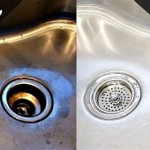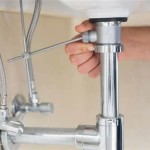Labor Cost to Install a Bathroom Sink: A Comprehensive Guide
The cost of installing a bathroom sink involves several factors, with labor being a significant contributor. Understanding the elements that influence labor costs allows property owners to budget effectively and make informed decisions when hiring a plumber or contractor. This article provides a detailed overview of the labor costs associated with bathroom sink installation, exploring the variables that affect pricing and offering guidance on how to estimate potential expenses.
The national average labor cost to install a bathroom sink typically ranges from $150 to $550. However, this is a broad estimate. The actual cost can deviate significantly depending on the complexity of the installation, the type of sink being installed, the geographic location, and the hourly rate of the plumber or contractor. Furthermore, any unforeseen complications, such as pre-existing plumbing issues or the need for structural modifications, can further impact the overall cost.
It's important to differentiate between the cost of the sink itself and the labor involved to install it. The sink fixture can range in price from a basic pedestal sink costing around $50 to a high-end custom-designed sink costing upwards of $1,000 or more. The labor cost, on the other hand, covers the professional time and expertise required to properly connect the sink to the plumbing system, ensuring proper drainage and water supply.
Key Point 1: Factors Influencing Labor Costs
Several key factors directly impact the labor cost associated with bathroom sink installation. These include the type of sink, the complexity of the installation, the existing plumbing infrastructure, and the geographic location.
Type of Sink: Different sink types require varying levels of expertise and installation time, consequently affecting labor costs. For instance, installing a simple drop-in sink is generally less labor-intensive than installing a wall-mounted or vessel sink, which may require additional structural support or specialized plumbing connections. The more complex the installation process, the higher the labor cost will likely be.
Drop-in sinks, also known as self-rimming sinks, are designed to be placed into a pre-cut opening in a countertop. The rim of the sink rests on the countertop, providing a relatively straightforward installation process. Undermount sinks, conversely, are installed beneath the countertop, requiring careful alignment and secure attachment using adhesives and mounting clips. This process usually takes longer and demands more precision.
Wall-mounted sinks present their own challenges. They require a sturdy wall structure capable of supporting the weight of the sink and any items placed on it. Reinforcement of the wall may be necessary, adding to the labor cost. Vessel sinks, which sit atop the countertop like a bowl, often require custom plumbing configurations and careful attention to faucet placement to ensure proper water flow and drainage.
Pedestal sinks, consisting of a sink basin supported by a freestanding pedestal, can also present unique installation challenges. While they eliminate the need for a vanity, they may require careful anchoring to the floor and wall to ensure stability. Any modifications to the existing plumbing to accommodate the pedestal can further increase the labor cost.
Complexity of Installation: The complexity of the installation process is another critical determinant of labor costs. A straightforward replacement of an existing sink with a similar model, using the existing plumbing connections, will typically incur a lower labor cost than a completely new installation or a significant alteration of the plumbing system.
Complications can arise if the new sink has different dimensions or plumbing requirements compared to the old one. In such cases, the plumber may need to modify the existing drain pipes, water supply lines, or even the countertop to accommodate the new sink. These modifications can add significantly to the labor cost.
Relocating the sink to a different location in the bathroom will almost certainly involve extensive plumbing work, including rerouting water supply lines and drain pipes. This can be a time-consuming and labor-intensive process, resulting in a substantial increase in the overall cost. Moreover, relocating the sink may require obtaining necessary permits and inspections, which can add to the administrative burden and expense.
Existing Plumbing Infrastructure: The condition and configuration of the existing plumbing infrastructure play a crucial role in determining the labor cost. If the existing plumbing is old, corroded, or improperly installed, the plumber may need to make repairs or replacements before installing the new sink. These repairs can add significantly to the labor cost and the overall project timeline.
For example, if the drain pipes are clogged or leaking, the plumber will need to clear the blockage or replace the damaged pipes. Similarly, if the water supply lines are old and corroded, they may need to be replaced to ensure proper water pressure and prevent leaks. These repairs can be time-consuming and may require specialized tools and materials.
Additionally, if the existing plumbing does not meet current building codes, the plumber may be required to bring it up to code before installing the new sink. This can involve replacing outdated pipes, installing backflow preventers, or making other modifications to ensure the plumbing system meets safety and performance standards.
Geographic Location: Labor costs can vary significantly depending on the geographic location. Plumbers and contractors in urban areas or regions with a high cost of living typically charge higher hourly rates than those in rural areas or regions with a lower cost of living. This is due to factors such as higher overhead costs, increased demand for services, and variations in local market conditions.
For instance, a plumber in New York City or San Francisco is likely to charge a higher hourly rate than a plumber in a smaller town in the Midwest. To get an accurate estimate of labor costs in a specific area, it is essential to obtain quotes from multiple plumbers or contractors who are familiar with the local market conditions.
Key Point 2: Types of Sink Installations and Associated Labor Costs
Different types of sink installations carry varying levels of complexity and, consequently, different labor costs. The most common types of bathroom sink installations include replacement, new installation, and relocation. Each type involves a unique set of tasks and challenges, impacting the overall labor expense.
Replacement: Replacing an existing sink with a similar model is generally the least expensive type of installation. This involves disconnecting the old sink, removing it from the countertop or wall, and installing the new sink in its place. The plumber will then connect the drain pipes and water supply lines to the new sink, ensuring proper drainage and water flow.
The labor cost for a simple replacement typically ranges from $150 to $350. However, the cost can increase if the plumber encounters any problems during the installation, such as corroded pipes or damaged plumbing connections. In such cases, additional repairs or replacements may be necessary, adding to the overall expense.
New Installation: A new installation involves installing a sink in a location where there was no sink previously. This requires running new water supply lines and drain pipes to the desired location, which can be a time-consuming and labor-intensive process. The plumber will also need to install a new drain trap and connect the sink to the main plumbing system.
The labor cost for a new installation can range from $300 to $550 or more, depending on the complexity of the plumbing work and the distance to the nearest water supply and drain lines. If the plumber needs to cut through walls or floors to run the new plumbing lines, the cost can increase further.
Relocation: Relocating a sink involves moving an existing sink to a different location in the bathroom. This is typically the most expensive type of installation, as it requires disconnecting the old sink, capping off the existing plumbing lines, and running new plumbing lines to the new location. The plumber will also need to repair any damage to the walls or floors caused by the relocation.
The labor cost for relocating a sink can range from $400 to $700 or more, depending on the distance the sink is being moved and the complexity of the plumbing work. In some cases, relocating a sink may require obtaining permits and inspections from the local building department, which can also add to the overall cost.
Key Point 3: Obtaining Accurate Estimates and Minimizing Costs
Securing accurate estimates and implementing cost-saving strategies are crucial for managing the expenses associated with bathroom sink installation. Property owners should gather multiple quotes, inquire about potential hidden costs, and explore opportunities to reduce the overall project expenditure.
Obtaining Multiple Quotes: It is essential to obtain quotes from at least three different plumbers or contractors before making a hiring decision. This allows for comparison of pricing, services offered, and estimated completion times. Carefully reviewing each quote ensures a comprehensive understanding of what is included in the price and helps identify any potential discrepancies.
When requesting quotes, provide as much detail as possible about the project, including the type of sink you are installing, the location of the sink, and any known plumbing issues. This will help the plumbers or contractors provide more accurate estimates. Be sure to ask about whether the quote includes all labor and materials, or if there are any additional costs that may arise.
Inquire About Potential Hidden Costs: It is important to inquire about any potential hidden costs that may not be included in the initial quote. For example, some plumbers may charge extra for travel time, disposal of old materials, or repairs to damaged plumbing. Understanding these potential costs upfront helps avoid unexpected expenses later on.
Ask the plumbers or contractors to provide a detailed breakdown of all costs associated with the project, including labor, materials, permits, and any other fees. This will help you understand exactly what you are paying for and identify any areas where you may be able to save money.
Explore Opportunities to Minimize Costs: Several strategies can help minimize the labor costs associated with bathroom sink installation. Consider purchasing the sink and faucet fixtures yourself, comparison shopping for the best prices. This can potentially save money compared to having the plumber supply the materials, as they may mark up the cost.
Performing some of the preparatory work yourself can also help reduce labor costs. For example, you can remove the old sink, clean the area around the sink, and clear any obstructions that may hinder the plumber's work. However, be sure to only perform tasks that you are comfortable and competent doing, as improper work can create further problems.
Scheduling the installation during off-peak hours or seasons can sometimes result in lower labor costs. Plumbers and contractors may be more willing to offer discounts during slower times to keep their schedules full. Inquire about any potential discounts or promotions that may be available.
Finally, consider the long-term benefits of investing in higher-quality materials and workmanship. While it may be tempting to choose the cheapest option, substandard materials or shoddy workmanship can lead to problems down the road, resulting in costly repairs or replacements. Investing in quality from the start can save money in the long run.

Bathroom Vanity Installation Cost 2024 Average S

Fixr Com Sink Installation Cost New

Fixr Com Bathroom Sink Cost To Replace

Fixr Com Bathroom Sink Cost To Replace

How Much Does It Cost To Install A Bathroom Vanity 2024 Bob Vila

How Much Does Sink Installation Cost

2024 Cost To Replace Bathroom Countertop A Guide

Bathroom Vanity Replacement Cost Interunet

How Much Does A New Bathroom Cost In 2024 Victoriaplum Com

How Much Does It Cost To Replace A Bathroom Sink Homeserve Usa







